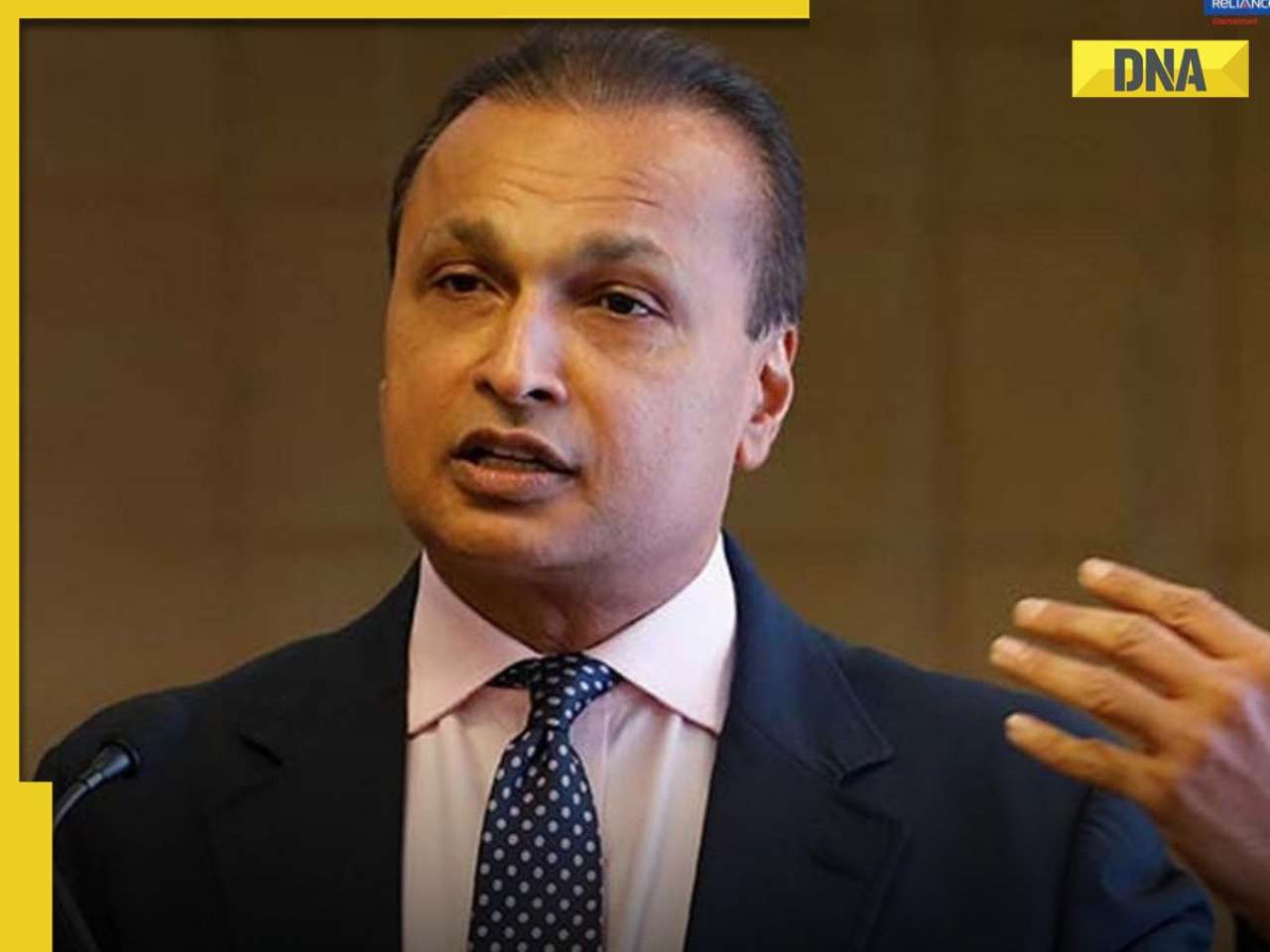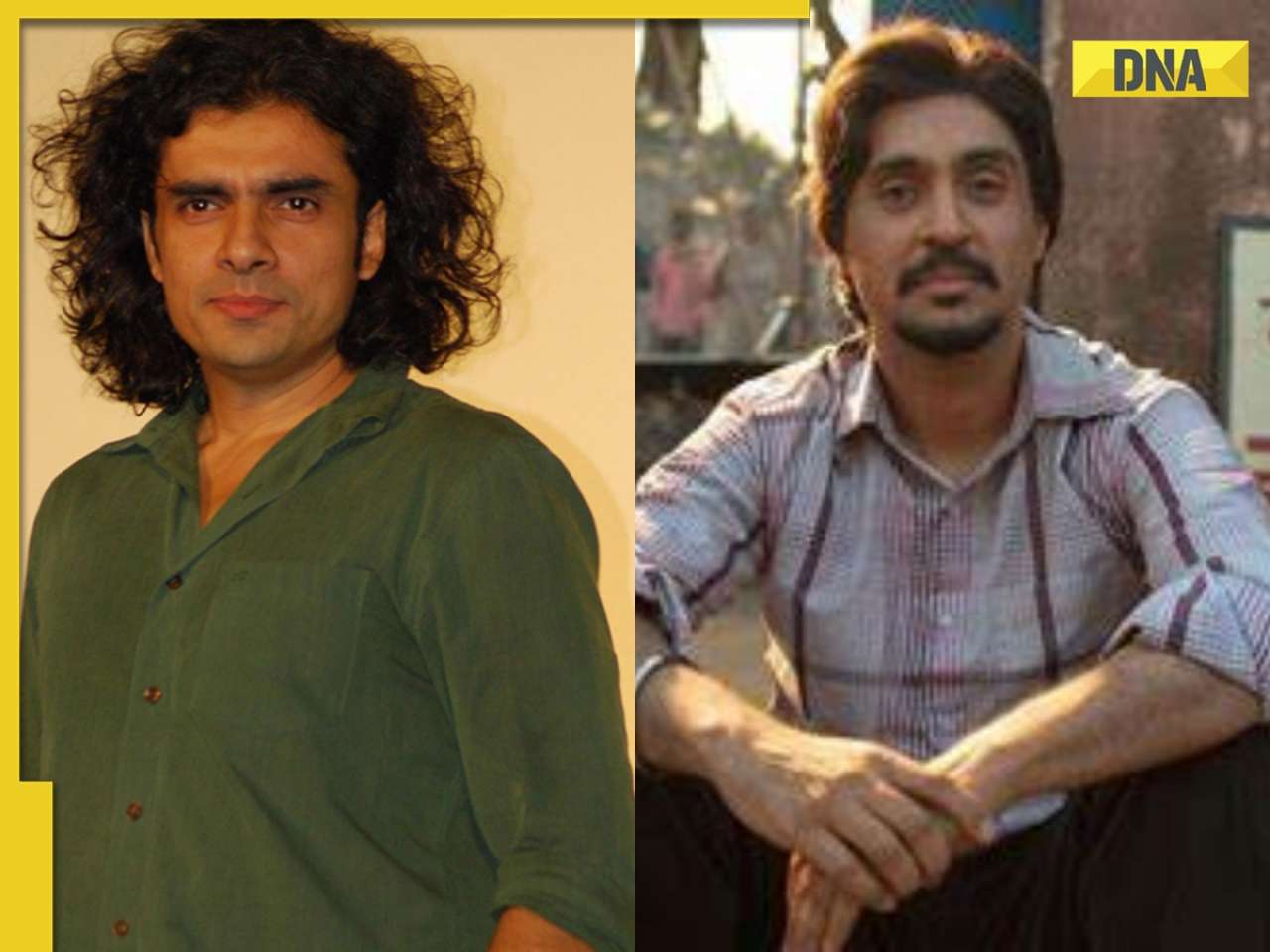An Indian researcher at the CCMB in Hyderabad believes that he and members of his former group "narrowly missed" this year's Nobel Prize for medicine.
BANGALORE: An Indian researcher at the Centre for Cellular and Molecular Biology (CCMB) in Hyderabad believes that he and members of his former group "narrowly missed" this year's Nobel Prize for medicine.
The prize, announced Monday at Stockholm, is shared by Americans Andrew Fire and Craig Mello for their discovery of silencing genes by a method known as "RNA interference" or RNAi. The technique has opened new paths to treating and even preventing a disease by switching off the gene responsible for it by introducing small strands of custom-made RNA molecules.
CCMB scientist Utpal Bhadra said his group - which included his wife Monika and James Birchler at the University of Missouri in the US - was one of the first to work on gene silencing but narrowly missed the Nobel race.
Bhadra said that while working at the University of Missouri his group showed how to silence genes in fruit flies for the first time. He joined CCMB in 2001.
"We made the discovery by accident," Bhadra told IANS in a telephonic interview, adding that the finding laid one of the foundations for RNAi. They published their findings in 1997 in Cell, a prestigious journal.
Fire and Mello, selected for this year's Nobel Prize, demonstrated gene silencing in nematode worms called 'C.elegans'. They pushed their findings in 1998, a year after the publication by Bhadra's team.
"I think Bhadra's team missed it narrowly," CCMB director Lalji Singh said.
Fire has himself acknowledged the Bhadra group's contribution in a message that says: "While we got the Nobel Prize, there are a lot of giant discoveries and you are part of that."
Bhadra, who had a long chat on Monday with his collaborator Birchler at the University of Missouri, said his group was initially in the panel under consideration by the Nobel committee but was eventually dropped "as there were too many players".
While claiming it was a narrow miss, Bhadra said he was delighted that this year's Nobel gave recognition to the field of research he and his wife - both Wellcome Trust Fellows - are working on.
While he is working on how to use the gene silencing technique to prevent AIDS and Japanese encephalitis, his wife Monika at the Indian Institute of Chemical Technology, also in Hyderabad, is focusing on using this method to prevent cancer. Bhadra's group has used this technique, with funding from the silk board, to create transgenic silkworms resistant to viral diseases.
Lalji Singh said that Bhadra's work on HIV and other viral diseases would speed up once his institute completes construction of the special containment facility for handling infectious organisms in the next two months.
The institute has also requested the parent body, the Council of Scientific and Industrial Research, for a Rs.1.89 billion grant to set up a dedicated centre on gene silencing "for development of novel drug and novel therapy not only for humans but also for animals and plants", he said.
While CCMB is where the applications of gene silencing are seriously pursued, several laboratories in India are routinely using the technique for knocking out genes, says Govindarajan Padmanabhan, a biochemist at the Indian Institute of Science, Bangalore.
According to Padmanabhan, infectious diseases and cancer are the prime targets for gene silencing. In many types of cancer, the genes which over-express can be blocked by silencing them, he said.
"Unfortunately, the malaria parasite does not have the machinery for gene silencing and so this method is not useful to tackle India's major health problem - malaria," he said.
While RNAi based drugs are now racing towards the clinic, Padmanabhan said the real hurdle is delivery of the gene silencing molecules to the targeted organs.
"You can inject these molecules directly into solid tumours, but for treating other diseases one must develop a reliable delivery mechanism. Scientists are studying the possible use of nanoparticles for this purpose. It will take time." —IANS
![submenu-img]() This singer left Air Force, sang at churches, became superstar; later his father killed him after...
This singer left Air Force, sang at churches, became superstar; later his father killed him after...![submenu-img]() Indian-origin man says Apple CEO Tim Cook pushed him...
Indian-origin man says Apple CEO Tim Cook pushed him...![submenu-img]() Anil Ambani’s Rs 96500000000 Reliance deal still waiting for green signal? IRDAI nod awaited as deadline nears
Anil Ambani’s Rs 96500000000 Reliance deal still waiting for green signal? IRDAI nod awaited as deadline nears![submenu-img]() Most popular Indian song ever on Spotify has 50 crore streams; it's not Besharam Rang, Pehle Bhi Main, Oo Antava, Naina
Most popular Indian song ever on Spotify has 50 crore streams; it's not Besharam Rang, Pehle Bhi Main, Oo Antava, Naina![submenu-img]() Did Diljit Dosanjh cut his hair for Amar Singh Chamkila? Imtiaz Ali reveals ‘he managed to…’
Did Diljit Dosanjh cut his hair for Amar Singh Chamkila? Imtiaz Ali reveals ‘he managed to…’ ![submenu-img]() DNA Verified: Is CAA an anti-Muslim law? Centre terms news report as 'misleading'
DNA Verified: Is CAA an anti-Muslim law? Centre terms news report as 'misleading'![submenu-img]() DNA Verified: Lok Sabha Elections 2024 to be held on April 19? Know truth behind viral message
DNA Verified: Lok Sabha Elections 2024 to be held on April 19? Know truth behind viral message![submenu-img]() DNA Verified: Modi govt giving students free laptops under 'One Student One Laptop' scheme? Know truth here
DNA Verified: Modi govt giving students free laptops under 'One Student One Laptop' scheme? Know truth here![submenu-img]() DNA Verified: Shah Rukh Khan denies reports of his role in release of India's naval officers from Qatar
DNA Verified: Shah Rukh Khan denies reports of his role in release of India's naval officers from Qatar![submenu-img]() DNA Verified: Is govt providing Rs 1.6 lakh benefit to girls under PM Ladli Laxmi Yojana? Know truth
DNA Verified: Is govt providing Rs 1.6 lakh benefit to girls under PM Ladli Laxmi Yojana? Know truth![submenu-img]() Alia Bhatt wears elegant saree made by 163 people over 1965 hours to Met Gala 2024, fans call her ‘princess Jasmine’
Alia Bhatt wears elegant saree made by 163 people over 1965 hours to Met Gala 2024, fans call her ‘princess Jasmine’![submenu-img]() Jr NTR-Lakshmi Pranathi's 13th wedding anniversary: Here's how strangers became soulmates
Jr NTR-Lakshmi Pranathi's 13th wedding anniversary: Here's how strangers became soulmates![submenu-img]() Streaming This Week: Heeramandi, Shaitaan, Manjummel Boys, latest OTT releases to binge-watch
Streaming This Week: Heeramandi, Shaitaan, Manjummel Boys, latest OTT releases to binge-watch![submenu-img]() Remember Ayesha Kapur? Michelle from Black, here's how actress, nutrition coach, entrepreneur looks after 19 years
Remember Ayesha Kapur? Michelle from Black, here's how actress, nutrition coach, entrepreneur looks after 19 years![submenu-img]() Remember Heyy Babyy's cute 'Angel' Juanna Sanghvi? 20 year-old looks unrecognisable now, fans say 'her comeback will...'
Remember Heyy Babyy's cute 'Angel' Juanna Sanghvi? 20 year-old looks unrecognisable now, fans say 'her comeback will...'![submenu-img]() DNA Explainer: Why Harvey Weinstein's rape conviction was overturned, will beleaguered Hollywood mogul get out of jail?
DNA Explainer: Why Harvey Weinstein's rape conviction was overturned, will beleaguered Hollywood mogul get out of jail?![submenu-img]() What is inheritance tax?
What is inheritance tax?![submenu-img]() DNA Explainer: What is cloud seeding which is blamed for wreaking havoc in Dubai?
DNA Explainer: What is cloud seeding which is blamed for wreaking havoc in Dubai?![submenu-img]() DNA Explainer: What is Israel's Arrow-3 defence system used to intercept Iran's missile attack?
DNA Explainer: What is Israel's Arrow-3 defence system used to intercept Iran's missile attack?![submenu-img]() DNA Explainer: How Iranian projectiles failed to breach iron-clad Israeli air defence
DNA Explainer: How Iranian projectiles failed to breach iron-clad Israeli air defence![submenu-img]() This singer left Air Force, sang at churches, became superstar; later his father killed him after...
This singer left Air Force, sang at churches, became superstar; later his father killed him after...![submenu-img]() Most popular Indian song ever on Spotify has 50 crore streams; it's not Besharam Rang, Pehle Bhi Main, Oo Antava, Naina
Most popular Indian song ever on Spotify has 50 crore streams; it's not Besharam Rang, Pehle Bhi Main, Oo Antava, Naina![submenu-img]() Did Diljit Dosanjh cut his hair for Amar Singh Chamkila? Imtiaz Ali reveals ‘he managed to…’
Did Diljit Dosanjh cut his hair for Amar Singh Chamkila? Imtiaz Ali reveals ‘he managed to…’ ![submenu-img]() Watch: Arti Singh gets grand welcome at husband Dipak's house with fairy lights and fireworks, video goes viral
Watch: Arti Singh gets grand welcome at husband Dipak's house with fairy lights and fireworks, video goes viral![submenu-img]() Meet actress, who belongs to family of superstars, quit films after 19 flops, no single hit in 9 years; is still worth…
Meet actress, who belongs to family of superstars, quit films after 19 flops, no single hit in 9 years; is still worth…![submenu-img]() IPL 2024: Suryakumar Yadav's century power MI to 7-wicket win over SRH
IPL 2024: Suryakumar Yadav's century power MI to 7-wicket win over SRH![submenu-img]() DC vs RR, IPL 2024: Predicted playing XI, live streaming details, weather and pitch report
DC vs RR, IPL 2024: Predicted playing XI, live streaming details, weather and pitch report![submenu-img]() Watch: Team India’s new jersey for T20 World Cup 2024 unveiled
Watch: Team India’s new jersey for T20 World Cup 2024 unveiled![submenu-img]() DC vs RR IPL 2024 Dream11 prediction: Fantasy cricket tips for Delhi Capitals vs Rajasthan Royals
DC vs RR IPL 2024 Dream11 prediction: Fantasy cricket tips for Delhi Capitals vs Rajasthan Royals![submenu-img]() IPL 2024: Kolkata Knight Riders take top spot after 98 runs win over Lucknow Super Giants
IPL 2024: Kolkata Knight Riders take top spot after 98 runs win over Lucknow Super Giants![submenu-img]() Indian-origin man says Apple CEO Tim Cook pushed him...
Indian-origin man says Apple CEO Tim Cook pushed him...![submenu-img]() Meet man whose salary was only Rs 83 but his net worth grew by Rs 7010577000000 in 2023, he is Mukesh Ambani's...
Meet man whose salary was only Rs 83 but his net worth grew by Rs 7010577000000 in 2023, he is Mukesh Ambani's...![submenu-img]() Job applicant offers to pay Rs 40000 to Bengaluru startup founder, here's what happened next
Job applicant offers to pay Rs 40000 to Bengaluru startup founder, here's what happened next![submenu-img]() Viral video: Family fearlessly conducts puja with live black cobra, internet reacts
Viral video: Family fearlessly conducts puja with live black cobra, internet reacts![submenu-img]() Woman demands Rs 50 lakh after receiving chicken instead of paneer
Woman demands Rs 50 lakh after receiving chicken instead of paneer















































)
)
)
)
)
)